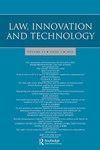人类尊严与人工智能:绘制人类尊严在应对人工智能挑战中的轮廓和效用
Q1 Social Sciences
引用次数: 1
摘要
摘要人工智能的普遍使用会给个人和社会带来积极和消极的后果。在负侧,人们不仅关注人工智能对一阶离散个人权利(如隐私权、不歧视权以及见解和言论自由权)的影响,而且还关注人权框架是否符合二阶挑战的目的,而以个人为中心的离散法律权利无法有效解决这些挑战。本文的目的是绘制人类尊严概念的轮廓和效用,以应对人工智能带来的二阶挑战。确定了对人类尊严的四个关键解释,即:人的非工具化;保护某些弱势群体;承认和行使固有的自我价值(包括行使个人自主权);以及保护人类的更广泛概念。本文将这些解释应用于人工智能可供性,认为人类尊严应该面临三个二阶挑战,即:经验自我表征和语境意义的去实体化;行使认知自主的选择架构;以及使用人类脆弱性规范框架的生活经验的经验背景。本文章由计算机程序翻译,如有差异,请以英文原文为准。
Human dignity and AI: mapping the contours and utility of human dignity in addressing challenges presented by AI
ABSTRACT The ubiquitous use of artificial intelligence (AI) can bring about both positive and negative consequences for individuals and societies. On the negative side, there is a concern not only about the impact of AI on first-order discrete individual rights (such as the right to privacy, non-discrimination and freedom of opinion and expression) but also about whether the human rights framework is fit for purpose relative to second-order challenges that cannot be effectively addressed by discrete legal rights focused upon the individual. The purpose of this article is to map the contours and utility of the concept of human dignity in addressing the second-order challenges presented by AI. Four key interpretations of human dignity are identified, namely: non-instrumentalization of the human person; the protection of certain vulnerable classes of persons; the recognition and exercise of inherent self-worth (including the exercise of individual autonomy); and a wider notion of the protection of humanity. Applying these interpretations to AI affordances, the paper argues that human dignity should foreground three second-order challenges, namely: the disembodiment of empiric self-representation and contextual sense-making; the choice architectures for the exercise of cognitive autonomy; and, the experiential context of lived experiences using the normative framework of human vulnerability.
求助全文
通过发布文献求助,成功后即可免费获取论文全文。
去求助
来源期刊

Law, Innovation and Technology
Social Sciences-Law
CiteScore
4.50
自引率
0.00%
发文量
18
期刊介绍:
Stem cell research, cloning, GMOs ... How do regulations affect such emerging technologies? What impact do new technologies have on law? And can we rely on technology itself as a regulatory tool? The meeting of law and technology is rapidly becoming an increasingly significant (and controversial) topic. Law, Innovation and Technology is, however, the only journal to engage fully with it, setting an innovative and distinctive agenda for lawyers, ethicists and policy makers. Spanning ICTs, biotechnologies, nanotechnologies, neurotechnologies, robotics and AI, it offers a unique forum for the highest level of reflection on this essential area.
 求助内容:
求助内容: 应助结果提醒方式:
应助结果提醒方式:


